Incubating goose eggs at home is a very exciting and at the same time difficult process. In order for the results of incubation to be always positive, all the nuances and features should be carefully studied.
This article provides information to help you learn how to breed geese in an incubator, how to collect and store goose eggs for incubation , and what pitfalls you can expect during this procedure.
What makes a successful process
Before proceeding with incubation, it should be taken into account that the following factors influence a successful result:
- Proper collection, storage, selection of eggs;
- The correct frequency of turning over ;
- Optimal temperature conditions;
- Required humidity level;
- Sufficient air exchange in the incubator chamber.
How to collect goose eggs
The collection of incubation material must begin in advance. Geese are not chickens [ - they do not give many eggs, so each specimen will be appreciated. However, it will not do without marriage.
For laying in the incubator, collect fresh, freshly laid eggs. Geese rush in the morning, so try to collect eggs at this time, while you can not disturb the bird - do everything as carefully and carefully as possible.
Geese constantly improve their nests, and they are covered with a thick layer of down. It is possible that the eggs can be located under it. Be sure to check the nests carefully.
To get a good hatching egg, you must follow a few rules:
- Provide your birds with a quality, balanced diet when you start collecting eggs for incubation;
- For a certain number of females, you need a certain number of males. This issue should be studied and recommendations followed.
- In the room in which geese are kept, it is necessary to create an optimal temperature regime.
- These tips will help you successfully hatch the maximum number of eggs and get healthy and active offspring.
By the way, if you are interested in breeding duck eggs, then useful material is here .
Goose egg incubation from A to Z
Storage
It will take some time to collect the required number of hatching eggs. In this case, eggs must not only be collected, but also properly stored . The optimum storage temperature for goose eggs for incubation is from +10 to +15 degrees. Incubation material should not be stored for more than 8 days, and during the collection period they will need to be turned over regularly.
Keep in mind that every day of storage negatively affects the quality of the eggs and eventually leads to disastrous results.
Experienced poultry farmers use a method that is identical to the natural environment. It consists in the fact that the eggs collected for incubation once a day for 1 hour are placed in an incubator for warming up. After that, they are returned to the storage place.
What kind of eggs to use for incubation
For successful breeding, it is necessary to put only high-quality material into the incubator. Too large or vice versa small eggs go into marriage. The shell should not have cracks, growths, roughness and other defects.
In order to verify the suitability of the collected specimens, it is necessary to perform candling of goose eggs. For this, a special device is used - an ovoscope, which, by the way, can be easily built with your own hands. To do this, you need to take a cardboard box, place a lamp inside, and make a hole on top into which the egg is placed for study. When candling, make sure that:
- Protein has no spots and blackouts;
- The yolk is one and is located in the center of the egg;
- After turning over, the yolk returns to the desired position.
By performing the correct collection, storage and selection, you can be sure that the incubation will be successful and the percentage of hatched chicks will be high.
Proper incubation of chicken eggs at home: a step by step process
To work with the incubator, you must read the instructions for its use. Equally important is the correct laying of eggs.
- During the first period of incubation, the temperature in the chamber should be 38 ⁰С.
- Further, from 8 to 12 days, the temperature must be reduced to 37 ⁰С. At the same time, eggs at this stage of incubation should be periodically cooled - open the incubator and turn it off for 10 minutes.
- The next stage is from 13 to 21 days. During this period, it is necessary to increase the humidity in the incubator to 65%. Cooling is also required, but for longer periods of time - about 30 minutes.
Table of incubation of goose eggs in an incubator
For the convenience of information perception, we have created a table in which all parameters are systematized.
On the 28th day of incubation, the eggs need to be aired and treated with a manganese solution..
The first chicks begin to appear on the 29th day. If everything is done correctly and accurately, then you will find a wonderful brood, active and healthy goslings.
Read more: What and how to feed goslings at different ages. And how to care for goslings at home can be found here .
On day 29, you can expect the appearance of the first goslings. If you strictly followed the instructions, you will have an excellent brood of chicks.



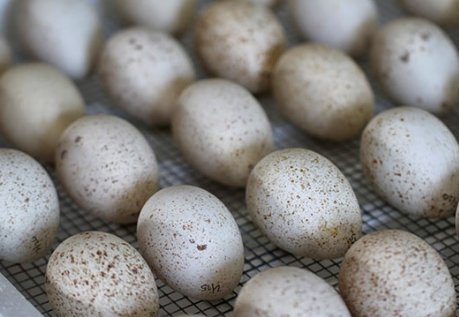
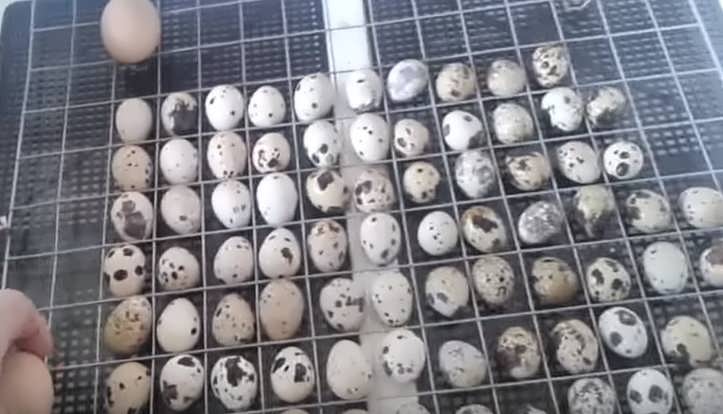
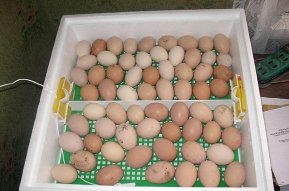
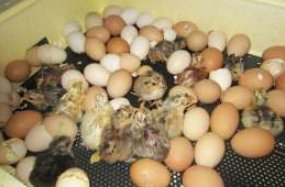
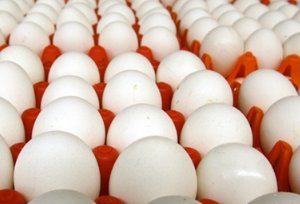

Thanks for the insightful information. I'm just planning to start breeding geese in an incubator this spring.
The incubation of goose eggs has its own characteristics and I realized this in practice. Your advice helped me to work on the mistakes and now I know what not to do.
Finally they began to write that the main thing in the incubation of goose eggs is cooling. My incubator is open from March 1 to June 15. Every 10 days I put fresh eggs in the incubator. Therefore, I have no time to show off and calculate when and from what day to cool each bookmark of eggs. I refrigerate them from the first to the last day of incubation in the morning and evening.
Why are you misleading people? For waterfowl, the humidity should be from 70 at the beginning to 90% by the end of the period! (Table)